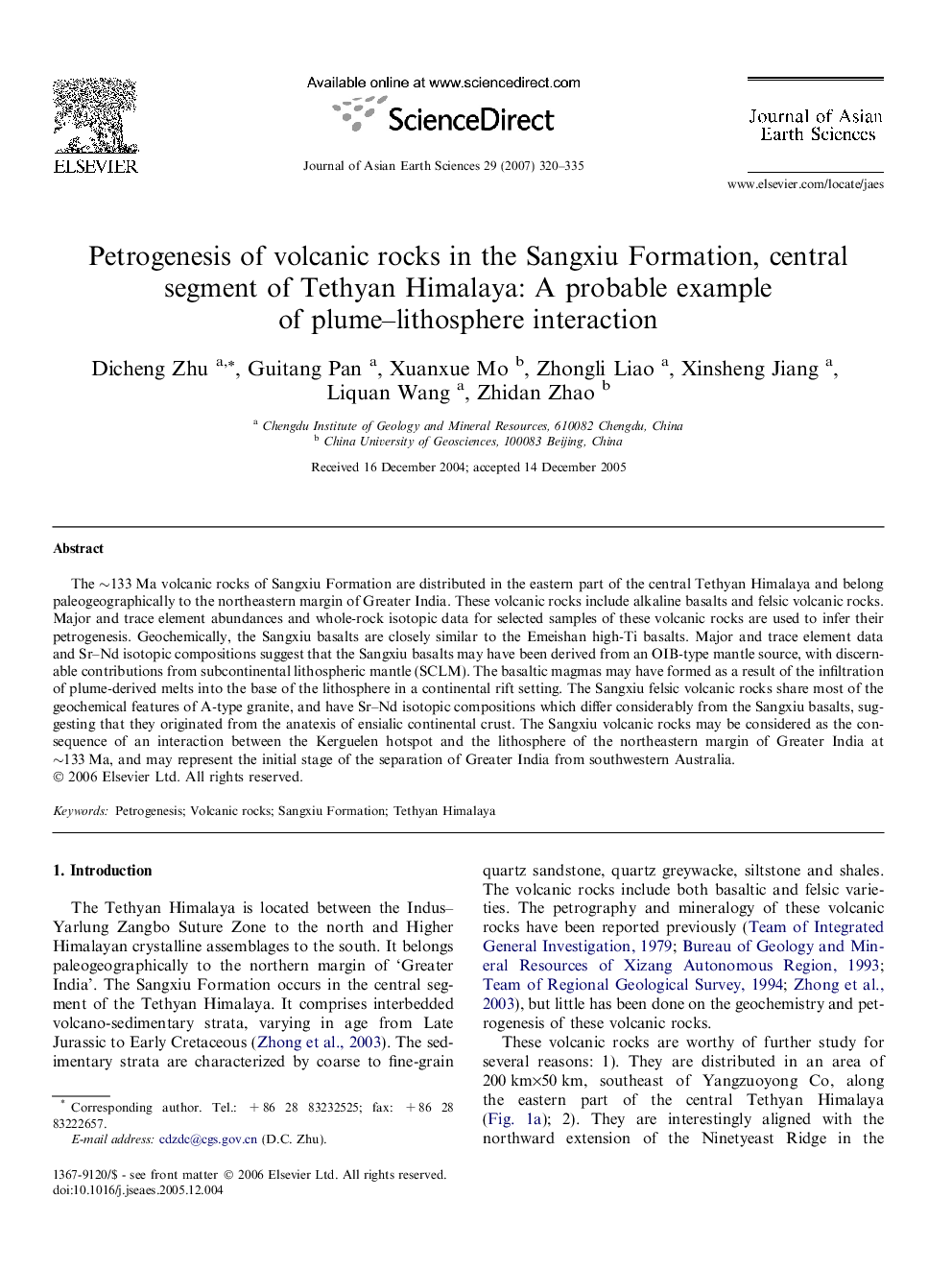| Article ID | Journal | Published Year | Pages | File Type |
|---|---|---|---|---|
| 4732812 | Journal of Asian Earth Sciences | 2007 | 16 Pages |
The ∼133 Ma volcanic rocks of Sangxiu Formation are distributed in the eastern part of the central Tethyan Himalaya and belong paleogeographically to the northeastern margin of Greater India. These volcanic rocks include alkaline basalts and felsic volcanic rocks. Major and trace element abundances and whole-rock isotopic data for selected samples of these volcanic rocks are used to infer their petrogenesis. Geochemically, the Sangxiu basalts are closely similar to the Emeishan high-Ti basalts. Major and trace element data and Sr–Nd isotopic compositions suggest that the Sangxiu basalts may have been derived from an OIB-type mantle source, with discernable contributions from subcontinental lithospheric mantle (SCLM). The basaltic magmas may have formed as a result of the infiltration of plume-derived melts into the base of the lithosphere in a continental rift setting. The Sangxiu felsic volcanic rocks share most of the geochemical features of A-type granite, and have Sr–Nd isotopic compositions which differ considerably from the Sangxiu basalts, suggesting that they originated from the anatexis of ensialic continental crust. The Sangxiu volcanic rocks may be considered as the consequence of an interaction between the Kerguelen hotspot and the lithosphere of the northeastern margin of Greater India at ∼133 Ma, and may represent the initial stage of the separation of Greater India from southwestern Australia.
